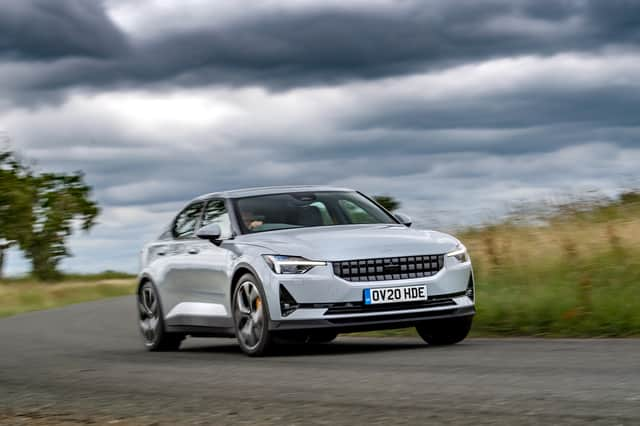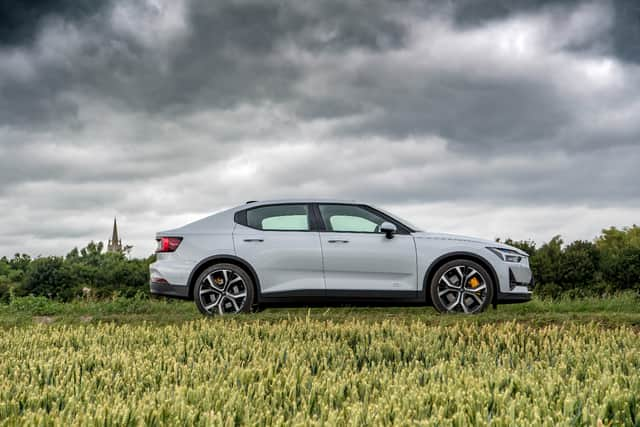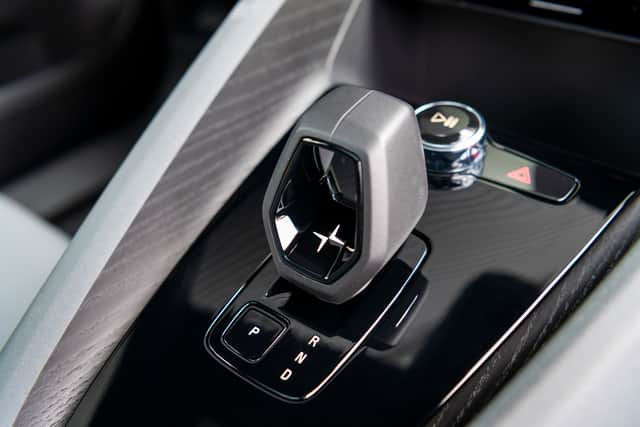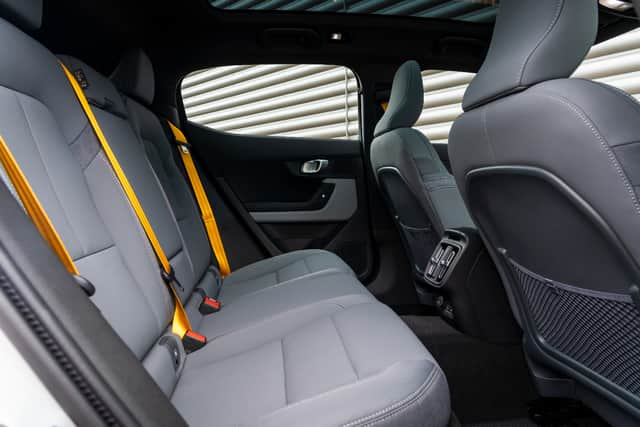Polestar 2 review: shining a light on the ever-changing EV market


The Polestar brand has had a bit of an unusual history.
It started life as an aftermarket tuning firm dedicated to making Volvos go quickly before being bought and brought in-house by the Swedish brand.
For a couple of years its experts were responsible for building official “hot” versions of Volvo’s range before the brand was spun off once again, this time to become a standalone all-electric performance brand.
Advertisement
Hide AdAdvertisement
Hide AdIt set out its stall quickly and comprehensively in 2019 with its first model - the Polestar 1. A stunning £140k two-door couple with a hybrid drivetrain and outrageous performance, it was designed to get the brand noticed before more sensible, real-world models arrived to market.


And arrive they have, in the shape of the Polestar 2. This is the brand’s first “mainstream” car, with a host of other logically numbered models on the horizon in coming years.
Unlike the 1, the Polestar 2 is a pure-electric car with four doors and a faintly raised ride height. It’s definitely not an SUV but it is taller than, for instance, a Volvo S60 saloon, so we’ll split the difference and call it a sort of fastback crossover.
Whatever else we’re calling it, we’ll call the Polestar 2 handsome. Despite the raised ride, it’s a fairly squat and square looking machine, with just enough road presence to get noticed without veering into the aggressive. The squarish shape is broken up by a few sharper lines around the grille and lights - which feature a familiar Thor’s Hammer motif - and the tailgate features a full-width light bar that adds some drama. However, the design doesn’t feel overly complicated or showy - something in common with its Volvo relatives.
Advertisement
Hide AdAdvertisement
Hide AdPolestar doesn’t shy away from its connections to Volvo. The 2 shares its platform with the XC40 and is derived from a concept designed by Polestar’s current CEO Thomas Ingenlath for its parent brand, explaining in part why there’s a distinctly Volvo-esque feel to the looks.


That feeling of familiarity is just as clear inside, where anyone who’s driven a Volvo recently will recognise elements of the trim and switchgear. That’s hardly a problem given the effortless style, solid build quality and user friendliness of the Scandi brand. And there are enough touches to highlight that this isn’t just an electric Volvo, such as the hollowed-out hexagonal gear selector, with the Polestar logo engraved one internal face.
Also currently unique to Polestar is its Android Automotive infotainment system. Housed in an 11.2-inch portrait touchscreen, it’s the first in-car setup built entirely around Google’s OS. It incorporates Google Maps and navigation, voice-controlled Google Assistant and all the functions for controlling the car’s settings for a seamless operation.
Touchscreens are not necessarily the best solution for all car operations but the Polestar’s Google setup is about as good as they come, with big clear graphics, a simple navigation process, rapid operation and voice recognition so good it’ll understand a Scots accent demanding to be taken to Mullguy (that’s spelled Milngavie for any non-natives).
Advertisement
Hide AdAdvertisement
Hide AdYou can also add any app from the Google Play store that has been cleared as safe for automotive use. For any Android Auto users, it’s like a superpowered version of that app with a far superior interface and none of the connectivity glitches.


Unlike its closest rival, the Tesla Model 3, the Polestar 2 also retains an instrument display directly in front of the driver - something the brand emphasises won’t change as it sees having driving data in plain sight as important for safety. In the 2 it’s an all-new, all-digital affair, configurable to show different arrangements of mapping, speed, range and other driving information.
Like its Swedish cousin, the Polestar 2 does an excellent job of making those on board feel comfortable thanks to supportive seats, an airy but enveloping cabin and interesting material choices in warm, light shades. The limits of the platform mean it’s really only a four-seater and rear passengers will feel a little penned in behind taller drivers, but those in front can stretch out in comfort. And a 405 litre boot access via a hatchback gives plenty of luggage space while a 35-litre “frunk” gives you room up front for the charging cables.
So, it looks good and is a nice place to sit, but as a new model taking on the mighty Tesla Model 3, the Polestar has to have some serious EV chops as well.
Advertisement
Hide AdAdvertisement
Hide AdEarly models came with just one powertrain choice - a two-motor, four-wheel-drive setup with a 78kWh battery. That’s badged the dual motor long range model and has now been joined by two other options - both single motor variants but with different power and battery specifications.


The top-spec car (the one we tested) offers 402bhp and 487lb ft, a 0-60mph time of 4.5 seconds and an official range of 298 miles. Below that, the long range single motor model uses the same 78kWh battery but a single front-mounted motor to produce 228bhp and 243lb ft, meaning 0-60mph in seven seconds and range of 335 miles. Then there’s the company car buyer’s friend, the “standard range” single motor. Its motor, fed by a 64kWh battery, produces 221bhp but the same 243lb ft, for 0-62mph in seven seconds and range of 273 miles.
All versions feature 150kW charging, so a suitably equipped charge point will add up to 80 per cent of charge in 40 minutes.
As with most EVs, the Polestar 2 is relatively heavy but its 402bhp means it still has a wealth of get up and go, delivered seamlessly and almost silently. The throttle and brake are beautifully weighted and linear, and variable regenerative braking offers a true single-pedal driving experience.
Advertisement
Hide AdAdvertisement
Hide AdThe steering is similarly well weighted, giving the car a substantial but not overly heavy feel, and a combination of a low centre of gravity and phenomenal amounts of grip mean it feels sure-footed and composed on any road. The only grumble is a ride verging on the overly firm, which transmits too much of the road surface into the cabin. According to colleagues, this can be remedied by avoiding the 20-inch alloys of our test car.


While the drivetrain arrangement varies, specification for the Polestar 2 is common across all versions and there are only four individual options (leather, metallic paint, 20-inch wheels and a tow bar). All cars come with LED headlights, heated front seats, dual-zone climate control, hands-free power tailgate, keyless entry and start, parking sensors and a suite of advanced driver assistance. They’re also fully vegan as standard, although you can specify Nappa leather upholstery for an additional £4,000.
The only other add-ons are the Plus, Pilot and Performance packs. Plus costs £4,000 and brings a panoramic glass roof, Harman Kardon sound system, Weavetech upholstery, black ash panels, and heating for the steering wheel, front and rear seats and wiper blades, plus a heat pump to aid climate control and reduce demand on the drive battery.
The £3,000 Pilot Pack enhances the driver assistance system with adaptive cruise control, a 360-degree camera system and active lane keep, blind spot and cross traffic assistance. The Performance Pack (£5,000) adds adjustable Ohlins dampers, Brembo four-piston brakes, lightweight forged 20-inch alloys and “Swedish Gold” colouring to the calipers, valve caps and seatbelts.
Advertisement
Hide AdAdvertisement
Hide AdIf you fancy one (and we wouldn’t be surprised) Polestar is also taking a different approach to sales. It has ditched the traditional dealership model and instead has a handful of retail spaces located around the UK and a focus on online buying. You can pop into one of its “Spaces” - in shopping centres and other high-traffic areas - for information and advice and to arrange a test drive or place an order, but this can all also be done online, with your car delivered to your door once it’s ready.


The EV market is developing and growing all the time, with everything from tiny city cars to massive SUVs vying for attention. Amidst them, the Polestar 2 feels like a rational, obvious choice. It’s good to look at, good to drive, has a sensible spread of powertrain options, a comfortable interior and class-leading infotainment. You can’t ask for much more.
Polestar 2 Dual Motor Long Range
Price: From £45,400 (£56,700 as tested); Motor: Two motors, combined 300kW; Battery: 78kWh; Power: 402bhp; Torque: 487lb ft; Transmission: Single-speed, all-wheel-drive; Top speed: 127mph; 0-60mph: 4.5 seconds; Range: 298 miles; Consumption: 3.2 miles/kWh; Charging: up to 150kW
Comment Guidelines
National World encourages reader discussion on our stories. User feedback, insights and back-and-forth exchanges add a rich layer of context to reporting. Please review our Community Guidelines before commenting.
